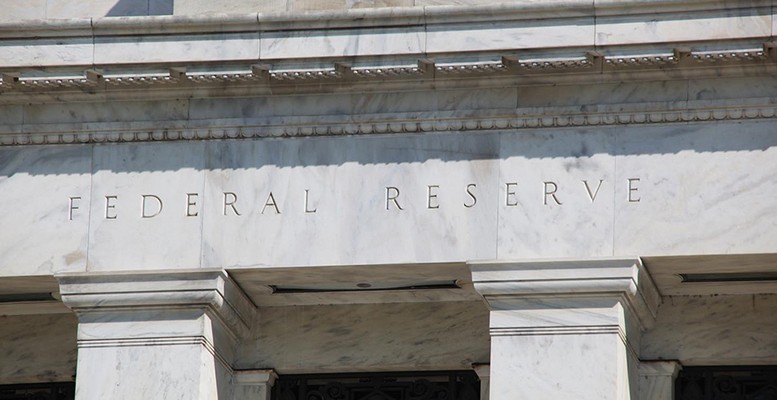BoAML | Central banks have learned the power of global spillovers the hard way in recent years. This is particularly true for the Federal Reserve, which paused planned policy tightening after the taper tantrum in 2013 and again after the sharp US dollar appreciation in 2014 and early 2015. In both cases US financial conditions deteriorated appreciably and the Fed responded by signalling a more gradual normalization. Markets outran the Fed, pricing in a very flat forward curve — basically assuming that global factors would restrain the Fed from hiking hardly at all. Thus this view pins the global risk-off shock in early 2016 largely on the Fed’s December liftoff, and presumes the Fed will not risk another adverse market reaction. The lack of additional hikes so far this year has ratified this interpretation in the eyes of many market participants, and as the market has priced out Fed rate hikes it expects the Fed to continue to follow suit (Chart 1).
But a funny thing happened on the way to locking the Fed inside this global box: the scope for policy divergence narrowed and global factors helped ease US financial conditions. In part this outcome reflects the Fed partially conceding the market’s view and reducing the hiking pace implied by the dot plot. In conjunction with the market’s perception that other developed market central banks may be reaching the limits of their unconventional tools, this change implies limited risk of another rapid USD appreciation. Meanwhile, most emerging countries — first and foremost China — appear less vulnerable than in the past. As yields have collapsed abroad, US financial conditions have broadly improved. Arguably, this combination of global outcomes creates less of a barrier to the Fed hiking rates at an upcoming meeting. Of course, an unexpected global shock could always throw things off course, but our US economics.
A more globalized Fed
It took some time for the Fed to come around to recognize the importance of global spillovers. The canonical view at the Fed had been that it should focus on domestic considerations, and that if the Fed is tightening because the US economy is doing better, that is good for the global economy as well. Moreover, if other countries are worried about global spillovers from Fed policy, their central banks are better positioned to deal with the issue. These economic arguments were bolstered by the political reality that it would be challenging to explain to Congress policies that might have appeared unduly sensitive to global considerations.
Governor Lael Brainard has been the strongest advocate within the Fed for directly embracing global spillovers and feedback effects. In a series of speeches over the past two years, she argued for a more gradual pace of normalization as a result. The Federal Open Market Committee (FOMC) appears to have largely embraced her views as the dots have drifted lower. At the end of July, New York Fed President Bill Dudley affirmed this global interconnectedness: “Put simply, monetary policy is a two-way street, and we all need to cognizant of that.”
Not another taper tantrum
The taper tantrum resulted in 10-year Treasury yields rapidly rising from around 1.6% in May 2013 to 3% by the end of that year. The market repriced higher the expected path of interest rates as “QE-infinity” views were priced out. Emerging markets broadly sold off as a result, exacerbating the tightening of global financial conditions. The market moves surprised the Fed, and they did not actually begin the taper until December.
In a “sell the rumor, buy the news” twist, Treasury yields peaked at the end of 2013. Once the taper began, Treasury yields began a steady decline back to 1.6%, and ultimately lower earlier this year. Global demand for safe assets and occasional risk-off bouts have supported low yields around the world, as have easing by other major central banks (Chart 2). It seems unlikely that yields can fall much more — our US rates strategists expect the 10-year Treasury yield to be 1.5% by year-end — if the Fed hikes by December. Conversely, continued easy policy abroad should limit the upside to US yields. Even the prospect for increased fiscal stimulus seems unlikely to materially raise interest rates, in our view: central banks welcome the partnership and bond vigilantes are simply nowhere to be found in the midst of low inflation and another savings glut.
The taper tantrum spurred concerns about capital flight not just from EM, but from China in particular. The fear was that tight monetary policy would depress Chinese demand, slowing global growth. The possible policy response of a large Chinese currency devaluation was seen as potentially even more destabilizing. Indeed, a modest if poorly- communicated Chinese devaluation prompted global markets to sell off in the fall of 2015; renewed concerns prompted another sell-off this past February. Since then, China has managed a more steady and gradual depreciation of its currency, backed by firmer capital controls.
EM more generally has benefitted from significant inflows in recent months as their economies have improved and returns in other asset classes have remained low or fallen further. How much additional risk exists for “hot money” flows back out of these countries at some point? It likely has risen somewhat recently, but as noted above the impetus for another sharp jump in global bond yields appears small: a 25bp Fed rate hike alone is unlikely to do it. The flatter path for subsequent Fed rate hikes — particularly if reinforced by updated September FOMC projections — is also more supportive.
*Image: ECB





